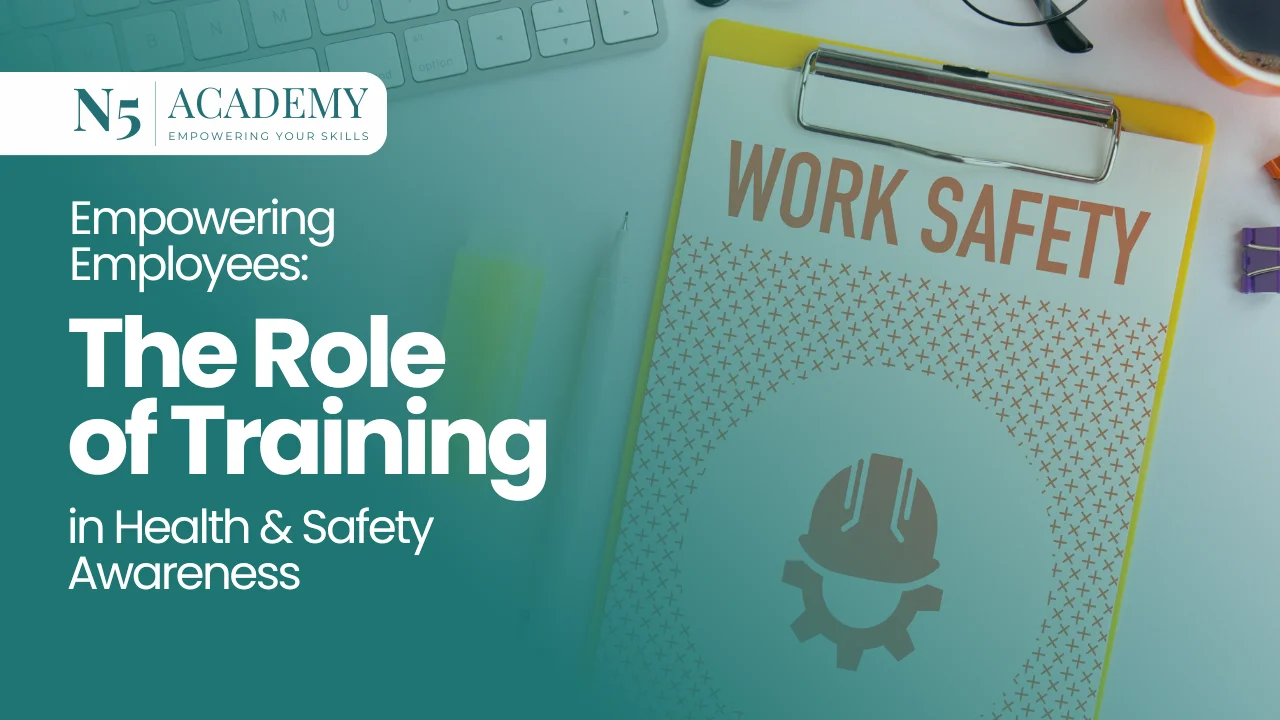

In today’s fast-moving work environments, employee health and safety training is more than just a legal requirement; it’s an important investment in people and productivity. With increasing public attention, growing awareness of mental health, and more complex jobs, UK businesses must focus on health and safety like never before.
Businesses now need to do more than avoid fines; they must promote wellbeing. Training helps employees handle physical dangers, emotional stress, and emergencies. As workplaces adjust to post-pandemic norms, safety education is essential for building resilience. Employers who invest in good training not only follow UK safety laws but also protect their organisations from physical and reputational risks.
The Health and Safety at Work Act 1974 is the main law for safety in the UK. It requires employers to ensure their employees’ health, safety, and welfare as much as possible. This includes providing health and safety training that fits each job’s risks and environment.
Regulations like the Management of Health and Safety at Work Regulations 1999 specify that employers must conduct risk assessments and provide employee training. Courses such as Emergency First Aid at Work and Fire Marshal training help companies meet these requirements. Not following these rules can lead to penalties, lower morale, lawsuits, downtime, and damage to the company’s reputation.
Laws set a basic standard, but proactive training goes further. Comprehensive safety education makes employees quick, confident, and responsive in emergencies. A trained team can effectively handle first aid, evacuations, fires, and minor hazards, which reduces harm and improves safety.
The benefits are significant. Fewer injuries mean less absenteeism, higher morale, and increased productivity. Employees feel more responsible and trusted when they have the skills needed for their jobs. For instance, someone trained in CPR or clearing airways can save a life, turning policy into action.
Creating a strong safety culture takes time, starting with training. Educating all employees, from newcomers to managers, builds a shared sense of responsibility and risk prevention. Training sessions, like Basic Life Support, help everyone think about safety.
Encouraging open discussions, sharing lessons from incidents, and involving staff in safety planning come from this education. Employees who understand the reasons behind policies are more likely to follow them. They become active participants instead of just following rules. When people care, they take action, leading to a culture that is proactive and dedicated to safety every day.
Every job has its risks, and every employee needs proper training. Health and safety training should be relevant and practical for all roles, from frontline workers to office staff. For example, construction workers benefit from the Traffic Marshal Course, while nursery professionals learn essential skills through Paediatric First Aid Training.
Providing the right training for each role improves learning and performance. It also shows employees that their safety matters, not just as workers but as individuals. Whether it’s ergonomics training for office staff or emergency drills for retail teams, effective training empowers everyone in their roles.
Smart businesses view training as an investment, not a cost. Effective workplace safety training leads to fewer injuries, which means fewer insurance claims. With less downtime, businesses earn more money, and lower staff turnover reduces hiring and training costs.
Training also improves reputation, employee loyalty, and customer trust. When employees feel safe and well-trained, they work better and stay longer. In today’s job market, companies that prioritise safety attract and keep talented individuals who value their own well-being and that of their coworkers.
Today’s workers want more than just lectures; they want to be engaged. Interactive learning methods, like simulations, group discussions, and hands-on practice, have become the best way to teach health and safety.
At N5 Academy, learners experience practical situations that help them remember what they learn. Whether they are putting out a fire in the Fire Safety Course or practising CPR in the Emergency Paediatric First Aid course, these engaging environments improve retention and lead to safer behaviours.
Many organisations struggle to implement effective training, even with good intentions. Common problems include limited time, tight budgets, and doubts about the impact of the training. However, using modular courses, online formats, and short intensive sessions like Emergency First Aid at Work can help overcome these issues.
Employers can encourage participation by linking training to job goals, providing certificates, and scheduling sessions during quieter times. Making safety training accessible, engaging, and rewarding helps maintain its importance. Regular refreshers and ongoing learning keep the momentum going.
Selecting the right training partner is crucial. N5 Academy offers more than just courses; they are committed to high-quality training. Their instructors have real-world experience, making the training practical and relevant.
They provide a variety of UK-compliant courses, including Basic Life Support, Fire Safety, Traffic Marshal, and Emergency Paediatric First Aid. Their emphasis on interaction and support after the course adds long-term value. With flexible delivery options and a proven success record, N5 Academy is an excellent choice for businesses wanting to improve workplace safety education.
Safety is not accidental. It comes from trust, knowledge, and being ready. Training employees in health and safety impacts more than just the workplace; it affects families, communities, and the future.
When employees are trained, they feel strong and confident. They don’t just follow rules; they live by them. They take action, keep others safe, and set a good example. Investing in training means investing in people. When people are safe, businesses do better.
To find training options that fit your company’s needs, visit N5 Academy and start building a safer and smarter future.
We help you forge a successful career in health and safety. We’re a UK-based company providing top-notch safety training courses that adhere to industry standards.